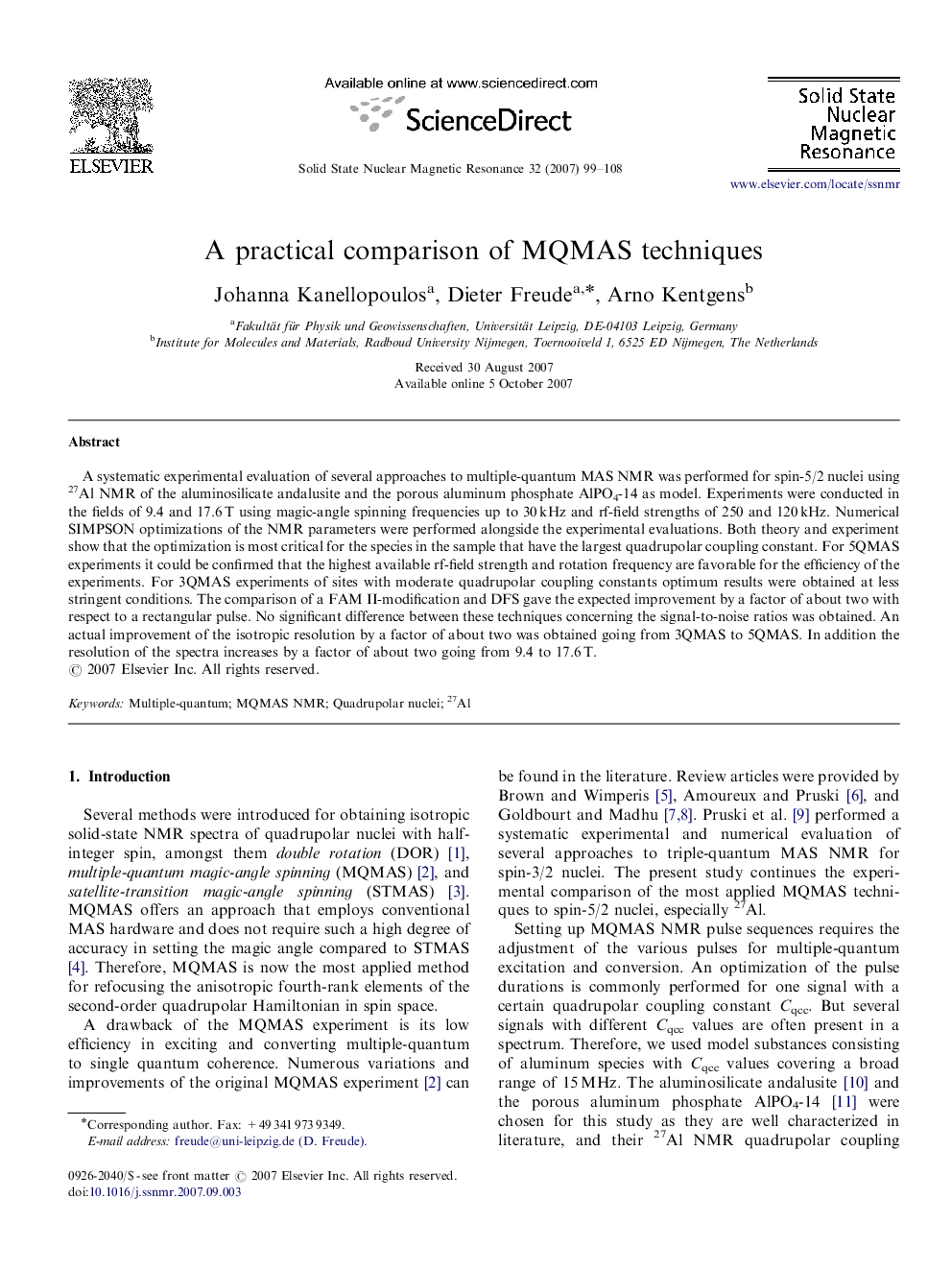| Article ID | Journal | Published Year | Pages | File Type |
|---|---|---|---|---|
| 5420811 | Solid State Nuclear Magnetic Resonance | 2007 | 10 Pages |
Abstract
A systematic experimental evaluation of several approaches to multiple-quantum MAS NMR was performed for spin-5/2 nuclei using 27Al NMR of the aluminosilicate andalusite and the porous aluminum phosphate AlPO4-14 as model. Experiments were conducted in the fields of 9.4 and 17.6Â T using magic-angle spinning frequencies up to 30Â kHz and rf-field strengths of 250 and 120Â kHz. Numerical SIMPSON optimizations of the NMR parameters were performed alongside the experimental evaluations. Both theory and experiment show that the optimization is most critical for the species in the sample that have the largest quadrupolar coupling constant. For 5QMAS experiments it could be confirmed that the highest available rf-field strength and rotation frequency are favorable for the efficiency of the experiments. For 3QMAS experiments of sites with moderate quadrupolar coupling constants optimum results were obtained at less stringent conditions. The comparison of a FAM II-modification and DFS gave the expected improvement by a factor of about two with respect to a rectangular pulse. No significant difference between these techniques concerning the signal-to-noise ratios was obtained. An actual improvement of the isotropic resolution by a factor of about two was obtained going from 3QMAS to 5QMAS. In addition the resolution of the spectra increases by a factor of about two going from 9.4 to 17.6Â T.
Keywords
Related Topics
Physical Sciences and Engineering
Chemistry
Physical and Theoretical Chemistry
Authors
Johanna Kanellopoulos, Dieter Freude, Arno Kentgens,
